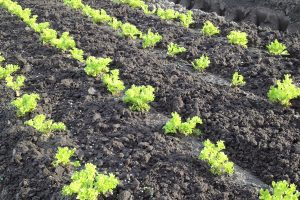Sulphate of Potash (SOP)
or Potassium Sulphate
| N% | P% | K% | S% | Zn% | |
|---|---|---|---|---|---|
| Typical Analysis | 0 | 0 | 41.5 | 17 | 0 |

- Chemical Name
- Potassium sulphate
- Crop Segments
- All
- Features
- Contains no chloride. Low salt index. Good source of potassium and sulphur.
- Quality & Handling
- Nominal 2-4 mm particle sizing. Bulk density 1.35 tonnes per cubic metre.
- Blending
- Blends with most products and trace elements.
1. Features and benefits
- SOP provides both potassium and sulphur in soluble forms.
- SOP contains no chloride and hence has a much lower salt index than MOP. Where soils are saline or sodic and where irrigation water may have high chloride levels SOP is the preferred form of potassium to use.
- Where seeds or transplants are placed in direct contact with fertiliser, SOP is much less likely to cause root burn of plants.
- Potassium stimulates the growth of strong stems and gives the plant some disease resistance by promoting thickness of the outer cell walls. Adequate potassium can reduce moisture loss from growing plants, thereby giving some drought resistance. Potassium improves colour, flavour and storing quality of fruit and vegetables.
2. Manufacture
Potassium Sulphate is manufactured in either of the following ways:
- Mined and processed to clean away unwanted salts
- Muriate of Potash is reacted with Sulphuric Acid
3. Uses
Potassium sulphate (SOP) can be a more expensive source of potassium than MOP and so its uses are often restricted to five main areas.
- Where soil or irrigation water salt levels are high and MOP is undesirable.
- Where chloride sensitive crops are being grown; for example, berries and vines.
- Where high chloride levels occur in irrigation water.
4. Storage and handling
- Potassium sulphate can be stored in bulk bags. It does not bond in the heap. Potassium sulphate is slightly hygroscopic and is neutral in reaction. All potassium fertilisers are corrosive and care should be taken when the fertiliser is in contact with metal. After application wash all machinery out with water.
5. Restrictions
- Do not store in silos




